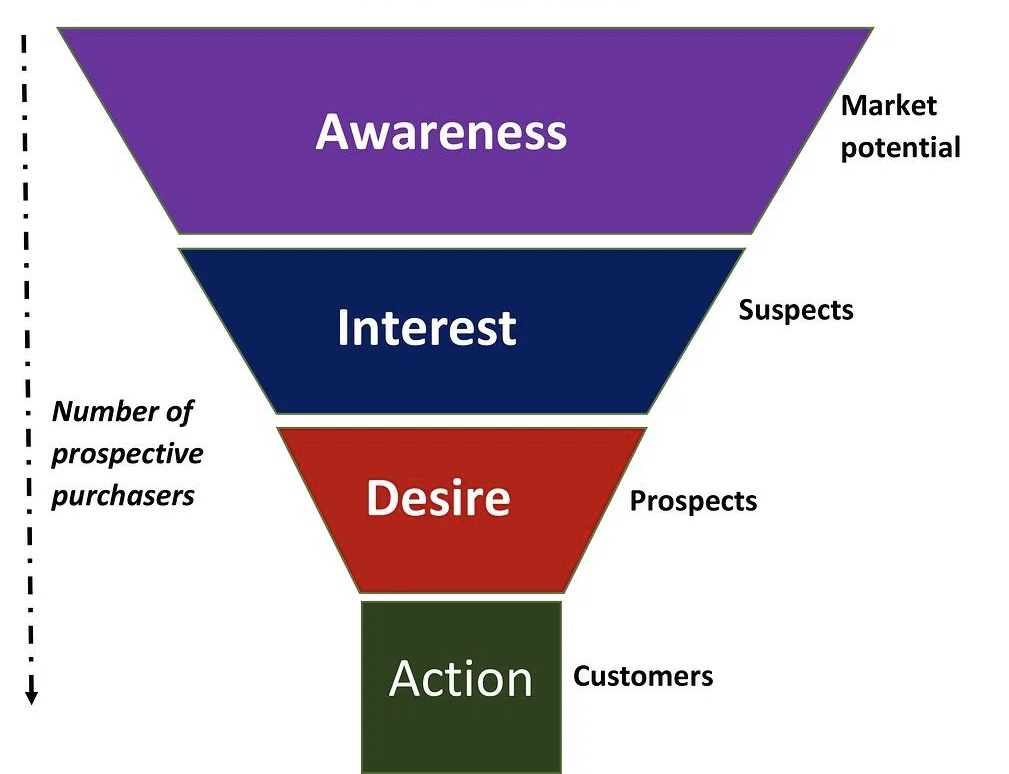If you’ve ever wondered how to create a successful marketing funnel in 2022, you’re not alone. But we’re here to help! In this blog post, we’ll explain what a marketing funnel process is, why it’s important, and how to build one that works for your business.
What is a Marketing Funnel?
A marketing funnel is a series of steps that guide your customers toward purchasing your product or service. In other words, it’s the sales process they take as they move from being aware of your company to becoming an actual customer. It starts with awareness (or “top-of-the-funnel”) and ends with sales (or “bottom-of-the-funnel”). The goal of the marketing funnel is to create a conversion process for a customer experience that keeps them coming back for more and more.
Why is a Marketing Funnel Important?
Marketing funnels are important for two reasons: first, they allow you to track how many people are going through each stage of the process. Second, they allow you to measure how effective each stage is at converting leads into customers. It makes them great for measuring ROI (return on investment) and makes everything that goes into your marketing strategy work towards achieving positive results for your business.
Marketing funnels help you understand where your customers are in their journey and what stage they’re in the conversion process. When you know where your customers are, you can make sure that every touchpoint along the way provides them with what they need to move forward.
The concept of a marketing funnel is not new. It’s been around since the beginning of time, but it’s never been more important than it is now.
Determine Who Your Customer Is
Before building out a marketing funnel, create a customer profile that includes information about your ideal customer’s demographics (age range and gender), location, and interests. Then, decide which type of content (blog posts, webinars) would resonate best with this audience and what stage of the buying process they’re currently in — this will help inform how many different types of content you need. You will have a clearer idea of how to capture your customer into your marketing funnel when you know who they are.
How to Build a Marketing Funnel
If you don’t have a marketing funnel, then there’s no strategy behind how you’ll approach your efforts. And if there’s no strategy, then it’s unlikely that you’ll be able to measure the success of those efforts—and adjust them accordingly.
Marketing funnels are one of the best ways to understand how your customers interact with your brand. They help you know which channels and messages are working and which ones aren’t.
That’s why we’re going to talk about the four marketing funnel components:
- Awareness—you’re introducing yourself to your audience and building their interest in what you offer.
- Consideration—you’re encouraging them to consider your product or service as an option for their needs, so they look into it deeper.
- Interest—you’re trying to convince them that this is the right product or service for them, based on their specific needs, budget, and preferences.
- Purchase—you’ve convinced them that this is the right product or service for them. They buy from you!
Awareness
The first stage is “awareness.” This means that people know your brand exists but don’t necessarily have any interest in it. They might have heard about it or seen something related to it, but they’re not necessarily interested in buying your product or service right now. This is where prospects are just learning about your brand and its products or services for the first time. They might be reading about it in an article or seeing ads for it on social media.
Consideration
The second stage is “consideration.” This means that people have heard of your brand and are thinking about whether or not they want to buy from it—but they haven’t decided yet. This stage is do or die. It is important to emphasize to your customer why your product or service is better than your competitor’s.
Interest
The third stage is “interest.” This is where people actually start to think about wanting your product or service—and either actively search for it online or talk about it with friends and family members who also might be interested in buying from you.
Purchase
This is where buyers make a purchase! They might still go back and forth with themselves over whether or not they really want what you’re offering—but ultimately decide that yes, they do! Look for ways to make it more convenient for the customer to buy from you.
Create Metrics
Once you have your customer journey broken up into those stages, create obtainable ways to measure your success at each step. Then look for ways to improve those metrics over and over again. This could look like posting on your social at a different time that has more customer traffic. Or changing up your call to action on your ads.
Summary
A marketing funnel is an essential part of any marketing plan. It acts as a road map for how to create consistent marketing leads. First, determine who your target customer is. Then through the four marketing funnel components: Awareness, Consideration, Interest, and Purchase, you can create a customer journey to help achieve your end goal. You can consistently improve upon each of these stages by creating metrics for each of these components. Happy marketing!

